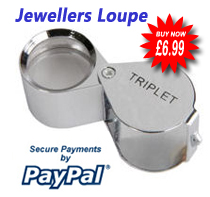So when one tell whether their silver coloured metal is the real thing?
Well, Sterling silver has several characteristics that distinguishes it from plated silver.
Silver jewelry comes in various forms, including sterling and plated. Sterling has 92.5 percent silver content; plated has a thin layer of silver bonded to a base metal.
Sterling silver is more expensive and retains its value over time because of its high silver content.
How to distinguish between Silver and silver plate
1 Check for sterling markings. These are words or numbers stamped on a item that represent its value. If it is a piece of jewelry, such as a necklace or ring, turn it over. For silverware, look on the handle, and for tea pots, look at the bottom. You should see the number ".925" marked on the piece. You may also see, "925/1000", or just the word "Sterling". Any of these indicate the piece is sterling silver.
2 Check for plated silver markings. These are found in the same places as sterling markings. You may see "EP," "EPNS," "EPC" or "Heavy Plate." These or any other markings other than sterling markings usually indicate an item is silver plated. Sometimes the markings are so small that you will need to use a magnifying glass.
3 Look for markings from other countries. Not all countries mark sterling silver the same way. For instance, some sterling silver items in England have a lion's head engraved, and sterling silver from Norway is marked "830." Research a silver marking guide, such as the "Online Encyclopedia of Silver Marks, Hallmarks and Makers' Marks" "Guide to gold and silver hallmarks"to compare the markings on your item and determine its country of origin.
4 Apply nitric acid to the surface. It will not affect sterling silver, but will turn silver-plated items green. Buy a silver jewelry testing kit; it will likely include a nitric acid-based solution. Find an inconspicuous spot on the item. Lightly scratch the spot with your fingernail or a needle, and apply a small drop of nitric acid.




